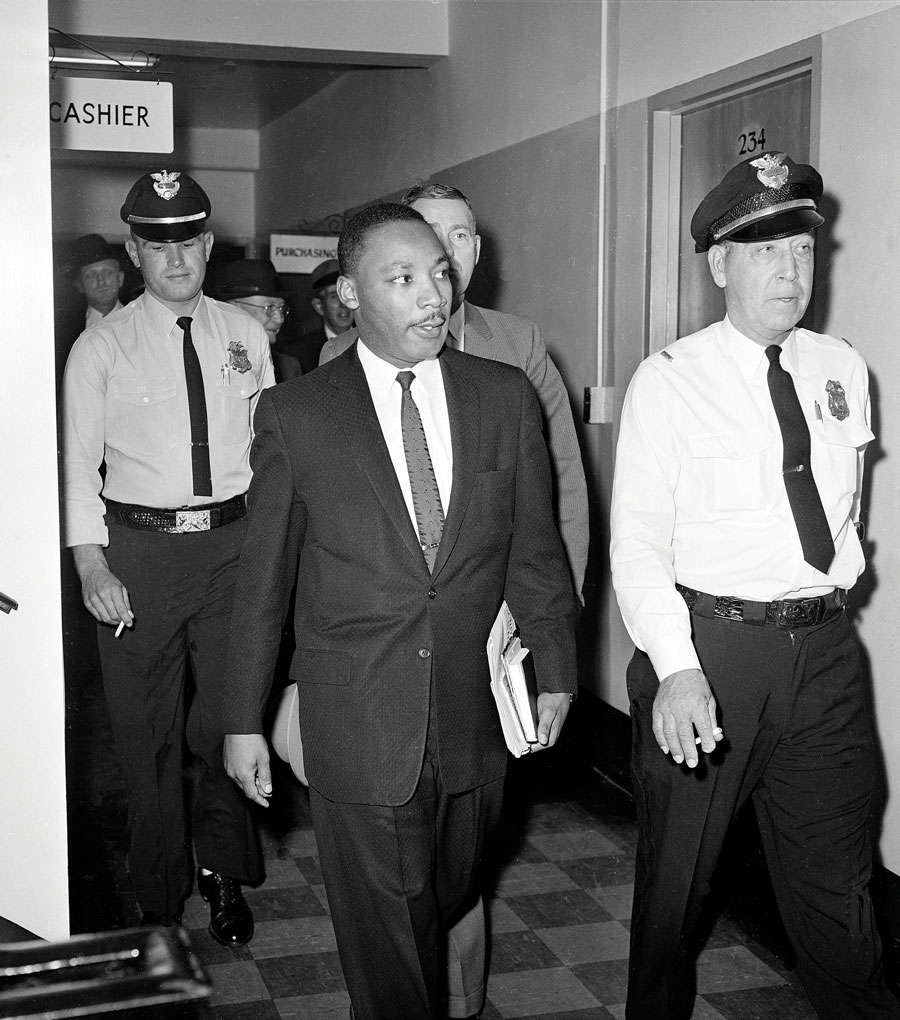
Photograph by Ben Rollins
Daxton Pettus, Genesis Reddicks, and fellow members of the Black Student Union at Decatur High School are barely old enough to vote, but they have already had an impact on local politics—helping a city with a progressive reputation confront its own racial history.
The students got involved when they learned about a little-known consequence of the famous sit-in at Rich’s department store on October 19, 1960. At the time, Martin Luther King Jr., then a young pastor and civil rights activist, was on probation in DeKalb County for driving without a valid Georgia license. Angered by King’s role in the downtown Atlanta protest, a DeKalb judge immediately sentenced him to four months in prison, working on a chain gang. The move prompted then presidential candidate John Kennedy to urge King’s release, helping the Massachusetts Senator win support from King and Black voters.
“It should be more well-known amongst people who live here that Martin Luther King was convicted in Decatur, Georgia—right next to Decatur High School—which is crazy,” Pettus says.
“Many times, Decatur likes to separate itself from the rest of the South and tries to create this idea that, Oh, we’re not like the rest of them. We’re not the same,” Reddicks says. But she realized King’s conviction proved her hometown wasn’t immune from Jim Crow, segregation, and racism.
The students learned about the incident from Michael Warren, an Associated Press editor who, after moving to Decatur from the Northeast in 2016, wondered why there were so few memorials of the civil rights movement. He read about King’s sentencing in local news outlet Decaturish and reached out to the Black Student Union in May 2019 to suggest an oral history of the event, which they named the Commemorating King in Decatur Project. Over the following months, with Warren as a mentor, the students pored over DeKalb History Center archives and interviewed now elderly participants in the protests, including Dr. Roslyn Pope and Charles Black, leaders of the Atlanta Student Movement, the group which organized the Rich’s sit-in.

AP Photo
Elizabeth Wilson—the city’s first Black mayor, who cofounded the DeKalb NAACP and helped desegregate the city’s library and schools as a young mother—told the students about moving to Decatur from Greensboro, Georgia. She found her new school wasn’t much different from the old one in East Georgia. Black children walked to school, while white children rode the bus. By the 1960s, Wilson and other Black neighbors were ready to take action. “We were not afraid,” she told the students. “We were not going to run anymore.”
DeKalb County Superior Court Judge Clarence Seeliger recalled that, in 1980, when he defeated Oscar Mitchell, the judge who had sentenced King, he asked his bailiff to remove the Confederate flag still flying at the courthouse entrance.
Inspired by these stories, the students launched a campaign to install a roadside marker commemorating King’s sentencing at the site of the former DeKalb County Jail, where the courtroom had been located. A local civil rights organization, the Beacon Hill Black Alliance for Human Rights, offered funding, as did the City Commission. When protests broke out over the police killings of George Floyd, Rayshard Brooks, and Breonna Taylor, the student union joined the chorus of voices demanding removal of a Confederate obelisk on the Decatur Square. On June 19, the monument was placed into storage, under Seeliger’s orders. The incident was especially remarkable as state law prohibits removal of Confederate memorials, but Seeliger found an exception by declaring that the obelisk could incite violence and was a public hazard.
Most recently, the students joined a Beacon Hill initiative calling for removal of a cannon on the Decatur Square. Installed by the United Daughters of the Confederacy in 1906, the cannon was used in the brutal Creek War of 1836, an effort by white land speculators to remove indigenous people from Georgia and Alabama, culminating in the Trail of Tears. The student union is also working with project partner Decatur Makers to commission public art by local Black and indigenous artists.

AP Photo/Ron Harris
On March 27, the Georgia Historical Society, which administers the state’s roadside marker program, will install the tribute to the King incident at McDonough Street and Trinity Place. The project, says Liza Watson, a former copresident of the student union who now attends the University of Georgia, allowed the teens to reconnect with their grandparents’ generation, showing them “all that they did when they were our age and how they impacted their communities. And, in a way, we could then take their stories and impact our own community.”
Reddicks hopes their efforts “inspire people to take up the work. Not just work that highlights the past, but work that betters the future.”
This article appears in our February 2020 issue.








![The North Carolina Museum of Natural Sciences’ newest exhibit is a [pre]historic first](https://cdn2.atlantamagazine.com/wp-content/uploads/sites/4/2024/04/DD-3-100x70.jpg)




